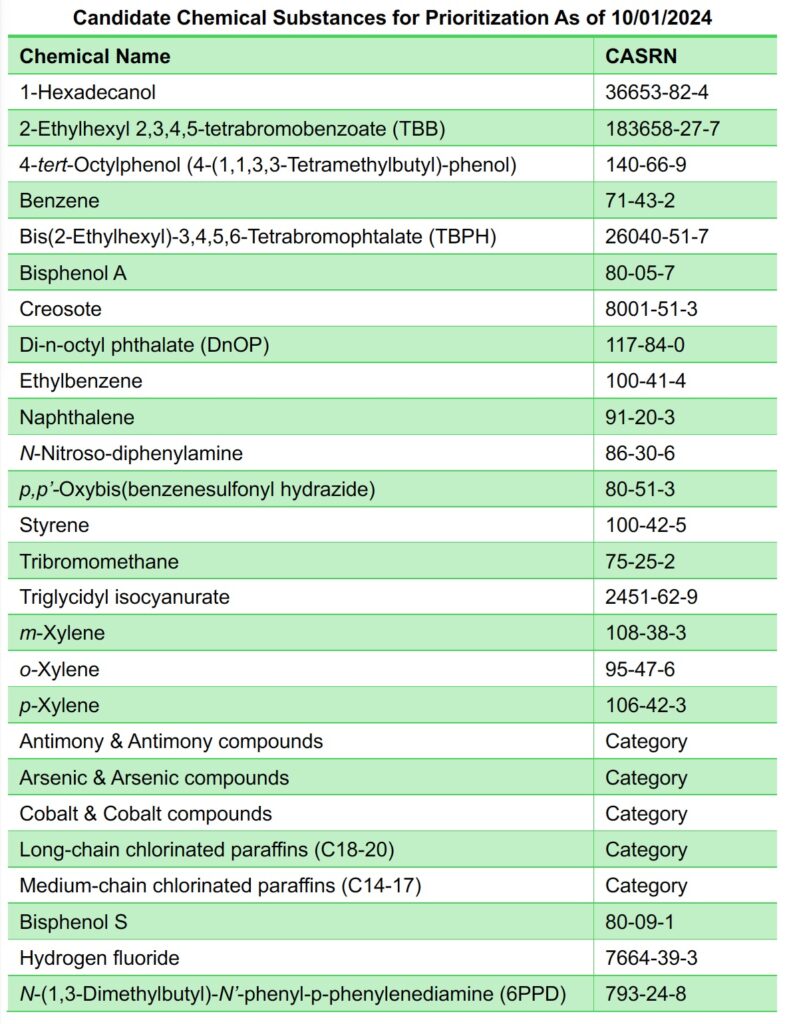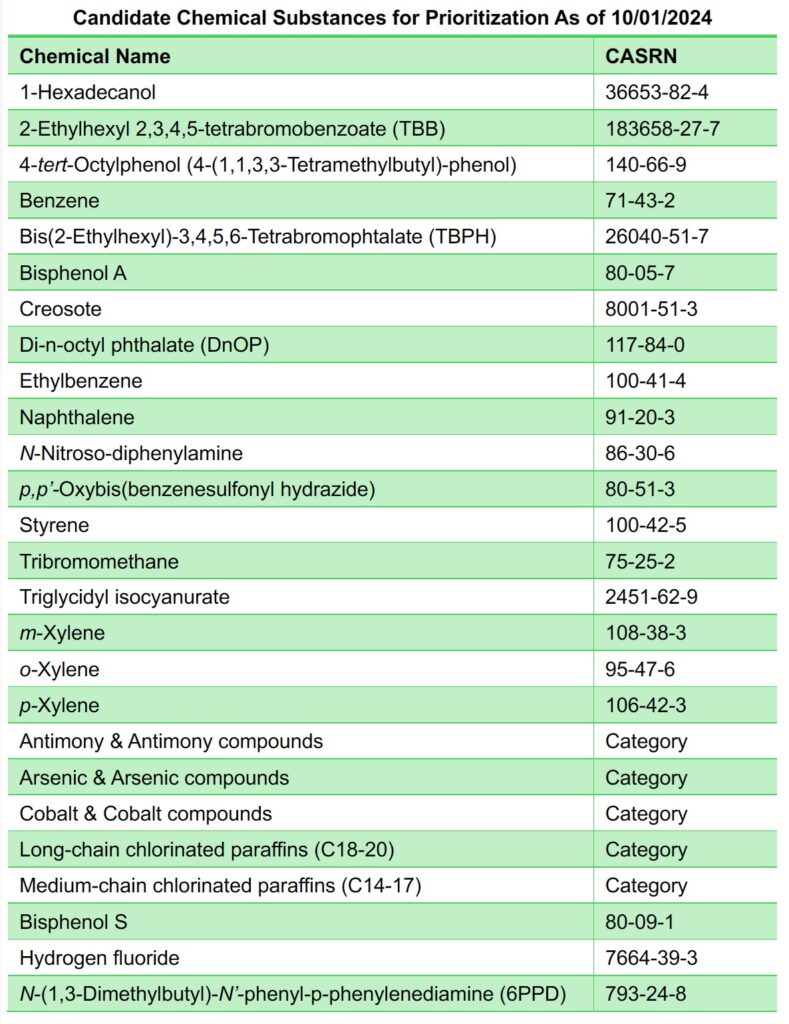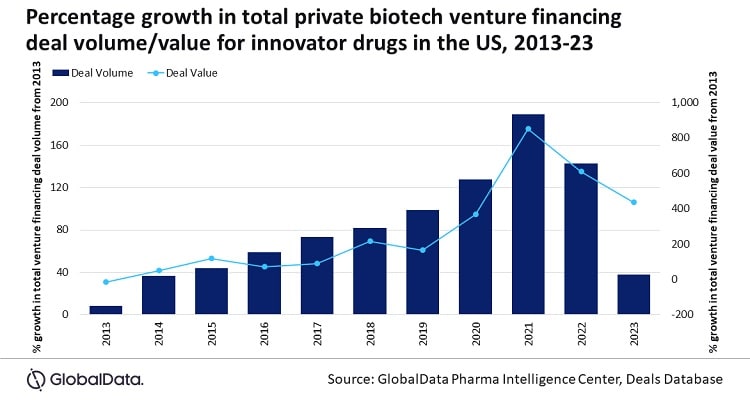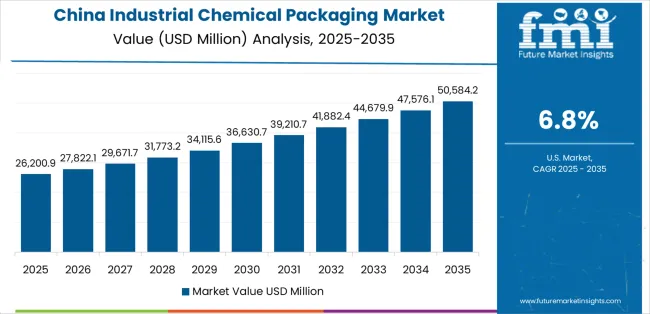Senators Demand Swift TSCA Reforms as EPA Nominee Faces Tough Congressional Scrutiny

Senate Confirmation Battles: Balancing Industry Experience and Public Health Priorities
The debate over the nomination of Douglas Troutman for the position of EPA assistant administrator for toxic substances has brought to light the conflicting priorities inherent in today’s chemical regulation landscape. At the heart of the matter lies the tension between speeding up the review process under the Toxic Substances Control Act (TSCA) and ensuring robust protections for public health and the environment. As senators from both sides of the aisle express their views, the op-ed takes a closer look at the twists and turns of this nomination process, examining how political, industrial, and environmental interests intertwine.
The Senate Environment and Public Works Committee’s recent hearing served as a vivid stage for this debate. Republicans have lauded Troutman’s more than a decade of experience managing government affairs for the American Cleaning Institute—a role they argue equips him with the know-how to streamline chemical reviews and promote economic growth. In contrast, Democrats have criticized Troutman as an “industry operative” whose record suggests a troubling closeness to the very industries he is tasked with regulating. They worry that his background may lead to a bias that could undermine public health initiatives, particularly when it comes to handling issues like per- and polyfluoroalkyl substances (PFAS), pesticides, and concerns from communities exposed to industrial pollutants.
At the center of this discussion is a broader debate about the speed and efficiency with which new chemicals are reviewed under TSCA. The statutory process, while detailed and risk-based, involves many tangled issues and confusing bits that must be carefully managed to avoid compromising either environmental standards or business competitiveness. This confirmation hearing, fraught with political and industry bias, has turned what might have been a routine appointment into a nerve-racking spectacle loaded with tension.
EPA Chemical Chief Nominees: Balancing Speedy TSCA Reviews With Environmental Safety
One of the key arguments presented by supporters of Troutman was his commitment to “press for more timely and certain reviews” of chemicals. Industrial stakeholders, particularly those in sectors like advanced manufacturing and data center construction, often find themselves on the lookout for greater regulatory predictability and less intimidating review processes. Proponents believe that speeding up these processes is not only essential for economic growth, but also critical in today’s competitive international marketplace.
On the other hand, concerns remain that a hastened review process might cut corners when it comes to fully assessing the nuanced aspects of chemical safety. Several senators pressed Troutman on issues related to PFAS regulation, pesticides like glyphosate and dicamba, and the unique risks faced by communities living near industrial facilities. These discussions have uncovered some of the subtle details—the nitty-gritty—which illustrate the massive challenge in balancing expedited reviews with the imperatives of public safety.
To clarify this debate, here is a brief table summarizing the contrasting perspectives:
| Perspective | Key Points |
|---|---|
| Proponents |
|
| Critics |
|
Political Tug-of-War: Examining Senate Committee Testimony and Industry Influence
The confirmation hearing revealed significant partisan divides, with senators using various examples to underscore their points. Ranking member Sheldon Whitehouse, for instance, described Troutman’s career as being steeped in an industry-first mentality—one that, in his view, plays into a broader discredited campaign against robust public health regulations. Whitehouse’s comments drew attention to the inherently tricky parts of having industry ties when it comes to regulating potentially hazardous chemicals.
Republican senators, however, argued that Troutman’s track record should be seen as an asset. They believe his hands-on understanding of legal and governmental affairs from working within the American Cleaning Institute is indicative of his capacity to find a path that supports both industrial progress and environmental safety. His testimony emphasized the need to adhere to statutory requirements while judiciously incorporating new technologies and expanding staffing to aid in the review process.
This kind of political tug-of-war brings up several layers of consideration. Several bullet points highlight the concerns raised during the hearing:
- The need for certainty and stability for American innovators working under TSCA regulations.
- Worries that a push for faster reviews may expose communities to untested chemicals.
- Debate on whether the EPA should stand firmly against regulatory rollbacks or adjust its course to foster business growth.
The multifaceted nature of these debates points to a broader challenge: figuring a path through an environment where industrial demands and public health requirements often seem to be at odds. It remains to be seen whether the EPA, under new leadership, will be able to balance these often conflicting priorities.
Streamlining Chemical Management: Assessing EPA’s Approach to TSCA Reforms
Another element of the conversation centers on the EPA’s ongoing efforts to modernize its approach to chemical safety and risk analysis. The agency, which has historically operated with rigorous checks and balances, has taken steps in recent years to adapt its review process. For instance, recent initiatives have sought to speed up reviews for chemicals critical to emerging sectors like data centers, which are essential for supporting the growth of artificial intelligence and other tech-driven industries.
While these changes are seen by some as necessary, they also raise concerns about whether the expedited processes might undermine the integrity of safety evaluations. Agricultural sectors, for example, are watching closely as amendments in pesticide regulations, including those under the Federal Insecticide, Fungicide, and Rodenticide Act (FIFRA), beg the question of whether new procedures will truly reflect the operational realities of modern farming practices.
Here are the main aspects of the discussion about TSCA reforms as they pertain to environmental safety and industry efficiency:
- Speed and Predictability: Supporters believe faster and more predictable reviews can boost economic activity and innovation.
- Risk-Based Decisions: Critics worry that in the bid for speed, the subtle parts of risk assessments could be overlooked.
- Resource Allocation: Both sides agree that enhanced staffing and technology must be allocated, yet debate lingers on how these changes should influence decision-making processes.
Considering these factors, the upcoming decisions by the Senate Environment and Public Works Committee will have far-reaching implications. The inquiry into the plan for more “timely” reviews touches on areas heavily loaded with issues—ranging from microplastics to endocrine-disrupting chemicals—each demanding careful thought and balanced judgment.
Impact of Chemical Safety Reforms on Public Health and Community Risk
At its core, the debate is about the impact of chemical safety reforms on public health. Critics have repeatedly stated that trying to expedite reviews might lead to a scenario where vital protective measures are compromised. The testimony saw lawmakers like Sen. Ed Markey and Sen. Jeff Merkley express clear dissatisfaction with what they perceived as an insufficient commitment to defending communities at higher potential risk.
For instance, concerns have been raised regarding how communities located near heavily industrialized areas are considered in the EPA’s risk assessments. Recent proposals that could narrow the EPA’s ability to factor in the repercussions on these “overburdened” communities have only heightened the debate. Legislators argue that ignoring the subtle details in the levels of exposure and risk can lead to dangerous public health outcomes.
A structured list of public health concerns includes:
- PFAS and Long-Term Exposure: Known as “forever chemicals,” these substances can accumulate over time and cause a host of health issues from cancer to immune system disruption.
- Microplastics: The pervasiveness of microplastics in our environment and their associated risks remain a significant worry for health experts and environmental scientists alike.
- Pesticide Residues: The widespread use of pesticides like glyphosate demands that reviews fully consider the potential for harmful exposures in residential and farming communities.
It is this intricate balance—ensuring speedy reviews for industry while safeguarding public health—that will define the next chapter for the EPA. The committee’s deliberations and eventual Senate vote on Troutman’s nomination are being closely watched by industry stakeholders, environmental groups, and community advocates alike.
Pesticide Regulations and Agricultural Impact: Challenges and Opportunities
One of the more contentious topics raised during the hearing concerned the regulation of pesticides under FIFRA. Modern agricultural practices rely heavily on crop protection tools such as glyphosate and dicamba, both of which have come under scrutiny for their environmental impact. While some lawmakers argue that these chemicals are essential for keeping the food supply chain secure and thriving, others warn that too lenient an approach could harm ecosystems and public health.
Senator Pete Ricketts (R-NB) used his time to stress the need for a reformed approach to pesticide regulation—one that is directly based on the current realities in the field rather than outdated practices. The core of his argument was that while rapid chemical reviews are indispensable for industrial growth, they should not come at the expense of overlooking significant health risks posed by these critical substances.
To break down the issues around pesticide regulation reform:
- Essentiality for Agriculture: Many in the agricultural sector see modern pesticides as indispensable, noting that without them, crop yields and food security could suffer.
- Environmental Considerations: There remains a strong advocacy for tight controls, given that some pesticides are associated with detrimental impacts on both human health and local ecosystems.
- Balancing Act: The challenge lies in finding a middle ground where the needs of modern agriculture are met without exposing communities or ecosystems to undue risk.
It is a delicate balancing act, one where minute miscalculations can produce outcomes with long-lasting consequences. Any reforms proposed by the EPA under a restructured TSCA framework will need to reflect this dual challenge, ensuring that all stakeholders—from industrial players to rural communities—are adequately considered.
Modernizing Chemical Reviews in the Era of High-Tech Innovation
The drive toward timely reviews is not only about reducing bureaucratic delays; it is also about aligning regulatory practices with the pace of technological innovation. Recent moves by the EPA to announce “expeditious reviews” of chemicals have a direct linkage to the booming data center and artificial intelligence sectors, where rapid deployment of new technologies is vital.
Modern businesses and industries are calling for streamlined processes that can keep up with evolving global markets. In a highly competitive atmosphere, delays in chemical approvals can have ripple effects throughout the supply chain, affecting everything from manufacturing timelines to consumer product availability. Proponents of faster reviews make the case that a more agile EPA is critical for maintaining America’s competitive edge on the international stage.
Key factors driving this change include:
- Technological Advancements: Enhanced IT resources and data analysis tools can facilitate quicker risk assessments without a corresponding dip in safety standards.
- Economic Pressures: In a globalized market, being able to expedite approvals can be a must-have advantage for American innovators.
- Risk-Based Approach: While speed is important, many stress that any acceleration must still adhere strictly to the risk-based underpinnings of TSCA to prevent harmful consequences.
Critics, however, worry that this push for modernization might rush decisions that have wide-ranging and long-lasting impacts. This is particularly worrisome given that some of the fine points of chemical safety management are easily overshadowed by the pressure to produce quick results. The challenge lies in integrating modern technology with meticulous safety protocols—a task that will define the future efficiency and credibility of the EPA.
Community Concerns and the Importance of Including At-Risk Populations
In addition to internal regulatory debates, external advocacy groups have expressed alarm over the potential sidelining of vulnerable communities in chemical risk assessments. Recent proposals to limit the EPA’s consideration of fence-line or “overburdened” communities raise a host of questions about environmental justice and public safety.
Lawmakers like Sen. Alex Padilla (D-CA) have highlighted that multiple studies indicate higher incidences of cancer and other health issues around industrial facilities. These communities frequently bear the brunt of chemical exposures, and any review process that minimizes their risks is likely to face stringent public scrutiny. The discussion during the confirmation hearing underscored the need for the EPA to remain fully aware of these subtle details—something that cannot be achieved when reviews are condensed into strictly business-friendly timelines.
To address these community concerns, several action points have been raised:
- Comprehensive Impact Studies: There is a call for detailed studies examining the long-term impact of chemical exposures on communities situated near industrial zones.
- Enhanced Community Engagement: Regulatory agencies should work closely with local leaders and health experts to ensure that community voices are heard in the decision-making process.
- Transparent Assessment Methods: It is crucial that the EPA employs methods which are open to public review, thereby fostering trust and accountability in the review process.
The outcome of these debates, and whether or not the EPA under Troutman’s potential leadership will effectively address these community risks, remains to be seen. What is clear, however, is that the EPA must strike a balance between the industrial demand for speed and the equally important need for environmental and public health safety—an endeavor that is both critical and challenging.
Legislative Strategies and the Future of TSCA: A Closer Look at Proposed Reforms
As the confirmation hearing winds down, the discussion about TSCA reforms remains a focal point of the legislative agenda moving forward. Lawmakers are eager to see concrete proposals that address several of the twisted issues in the current system. Many suggest that enhanced transparency, improved staffing, and better technology integration are key components that can simultaneously drive efficiency and safeguard the public interest.
In considering these reforms, several legislative strategies have emerged as central to achieving a balanced approach:
- Maintaining a Risk-Based Framework: Despite calls for faster reviews, the underlying framework of risk assessment remains super important. Ensuring that all chemicals—both new and existing—are evaluated on a merit basis is essential.
- Investing in Scientific Infrastructure: Additional research funding and technological investments could help remove some of the confusing bits of current processes, ensuring that reviews are both speedy and thorough.
- Incorporating Stakeholder Feedback: An iterative process that includes feedback from industry representatives, environmental groups, and affected communities can foster a more inclusive approach to regulation.
Below is a summarized action plan that many experts believe could help reform TSCA reviews:
| Action Item | Benefits | Potential Challenges |
|---|---|---|
| Enhanced Technology Integration |
|
|
| Increased Staffing and Expertise |
|
|
| Incorporating Community Feedback |
|
|
This table outlines several of the key reforms under consideration. While the goal remains to protect public health and the environment, it is clear that a one-size-fits-all approach may not work in an era defined by both rapid technological advances and persistent industrial interests.
Industry Ties Versus Public Confidence: The Debate Around Regulatory Integrity
A striking feature of the confirmation hearing was the intense focus on Troutman’s history in industry affairs. Democrats have expressed their belief that his previous role in the American Cleaning Institute positions him squarely in the midst of a network deeply intertwined with chemical and manufacturing interests. They argue that such a background may inadvertently steer the EPA towards a bias that undervalues the potential health risks associated with certain chemicals.
Republican voices counter that perspective by viewing industry experience as an essential component of effective governance. They contend that familiarity with industry operations lends a practical perspective—one that is critical for finding your way through the challenges of regulatory reforms without causing undue disruptions in the marketplace.
Key arguments around this debate include:
- Perception of Bias: Critics worry that an industry-centric background might lead to subtle differences in how chemical risks are evaluated, potentially favoring economic gains over community safety.
- Operational Expertise: Proponents highlight that real-world industry experience provides essential insights that academic or solely regulatory perspectives might lack.
- Accountability and Transparency: Many emphasize that regardless of background, the EPA must maintain the highest levels of transparency and accountability to build lasting public trust.
Finding the balance between these contrasting views is a tricky part of modern regulatory policy. As this debate unfolds, the challenge will be to ensure that even as the EPA streamlines its processes, the subtle parts of risk assessment and community protection are never compromised.
Future Prospects: What Lies Ahead for EPA Chemical Reviews?
Looking forward, the confirmation of an EPA leader who is both committed to economic growth and sensitive to public health risks remains a super important goal. The Senate Environment and Public Works Committee’s next steps will be pivotal in determining the course of TSCA reforms. As senators prepare to deliberate and vote on advancing Troutman’s nomination to the full Senate, all eyes are on how these decisions will shape the future of chemical reviews.
The ultimate challenges for the EPA in this new era are clear:
- To embrace innovative technological tools that can quicken the review process without sacrificing safety.
- To engage meaningfully with communities that are at higher risk of exposure to hazardous chemicals.
- To adopt a balanced approach that remains true to risk-based principles while fostering economic innovation.
For small businesses, automakers, chemical manufacturers, and even emerging sectors like electric vehicles and tech-driven data center construction, the outcome of this nomination—and any subsequent TSCA reforms—will be highly significant. The administration’s ability to manage the interconnected challenges of accelerating innovation while protecting public health is a delicate process, full of confusing bits and nerve-racking decisions.
Conclusions: Striking a Delicate Balance in a Tense Regulatory Landscape
In conclusion, the confirmation hearing for Douglas Troutman has underscored the tangled issues inherent in modern chemical regulation. While the drive for moving faster in the review process is clear, the stakes—ranging from PFAS to pesticide safety and community health—demand a methodical and balanced approach. Both the industry benefits of speedy reviews and the essential need to protect public health have created a scenario that is as politically charged as it is critical for the nation’s well-being.
The twists and turns of this nomination process serve as a reminder of the many challenges facing regulatory agencies today. With the combination of political tug-of-war, the push for technological modernization, and the imperative to safeguard at-risk communities, the road ahead is filled with both significant opportunities and intimidating pitfalls.
Ultimately, the success of TSCA reforms will depend on the EPA’s ability to work through these complicated pieces—merging industry expertise with a steadfast commitment to public health. If done right, this balanced approach could set a new standard for chemical safety and regulatory efficacy. If mismanaged, it could undermine decades of progress in environmental protection and public trust.
Looking Ahead: Recommendations for Stakeholders
For policymakers, industry leaders, environmental advocates, and community representatives, there are several recommendations that arise from this entire episode:
- Transparency in Process: All stakeholders must demand transparent reporting methods from the EPA to ensure that processes remain accountable to public health, even in the face of expedited reviews.
- Stakeholder Engagement: There should be structured opportunities for communities, particularly those living near industrial zones, to provide input and feedback during the evaluation process.
- Balanced Reform Measures: Regulatory reforms should incorporate both technological advancements and traditional safety checks, ensuring that neither economic efficiency nor environmental integrity is compromised.
- Continuous Review: The EPA must establish periodic evaluations of its review process to identify any nerve-racking shortfalls early on, allowing for quick adjustments as necessary.
These recommendations, while not exhaustive, provide a clear pathway for reconciling the diverse interests at play in today’s regulatory environment. They also underline the essential need for cooperation between different sectors to ensure that progress in one area does not inadvertently harm another.
Final Thoughts: A Cautious Optimism for the Future
As the nation watches closely, the final vote on Troutman’s nomination will not just determine the leadership of one office—it will signal the direction of American chemical policy for years to come. The balance that must be struck is one that acknowledges the need for quicker reviews and the equally important necessity of protecting human health and the environment.
In the end, whether one views Troutman’s nomination as a step in the right direction or remains skeptical of its potential impacts, the debate itself is a healthy reminder of the importance of oversight and accountability in government affairs. By examining this nomination closely, senators, industry players, and the public alike are invited to partake in a broader conversation about what kind of environmental and industrial future we want to shape.
In a world where every decision can have far-reaching ramifications—affecting small businesses, entire industries, and vulnerable communities alike—the challenges are numerous and the stakes are high. It is up to all of us, working together and with open eyes, to figure a path forward that does justice to both economic innovation and the critical need for environmental protection.
Summary
This op-ed examined the Senate confirmation process for the EPA’s nominee for toxic substances administrator, focusing on the layered debates over speeding up TSCA reviews while ensuring robust environmental and public health standards. The discussion highlighted:
- The contrasting viewpoints on industry experience versus public health advocacy.
- The challenges of streamlining chemical reviews in a fast-paced technological era.
- The importance of safeguarding at-risk communities and addressing pesticide regulation concerns.
- Legislative strategies aimed at modernizing TSCA reviews in a balanced, transparent manner.
Ultimately, as the EPA stands at the crossroads between fostering economic growth and maintaining stringent safety standards, the decisions made in the coming weeks will carry profound implications for industry, environmental policy, and public health. The delicate balancing act continues, as regulators, lawmakers, and the public work together to steer through a landscape filled with both promising opportunities and nerve-racking challenges.
Originally Post From https://cen.acs.org/policy/chemical-regulation/Senators-press-EPA-chemical-chief/103/web/2025/10
Read more about this topic at
EPA Proposes Major Changes to Chemical Risk …
EPA Reforms New Chemicals Review Process to Better …



